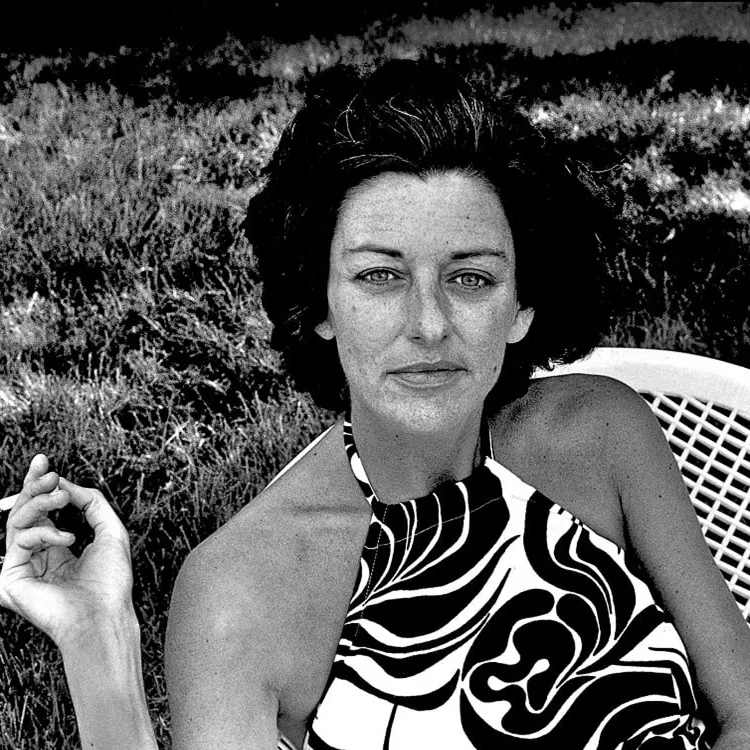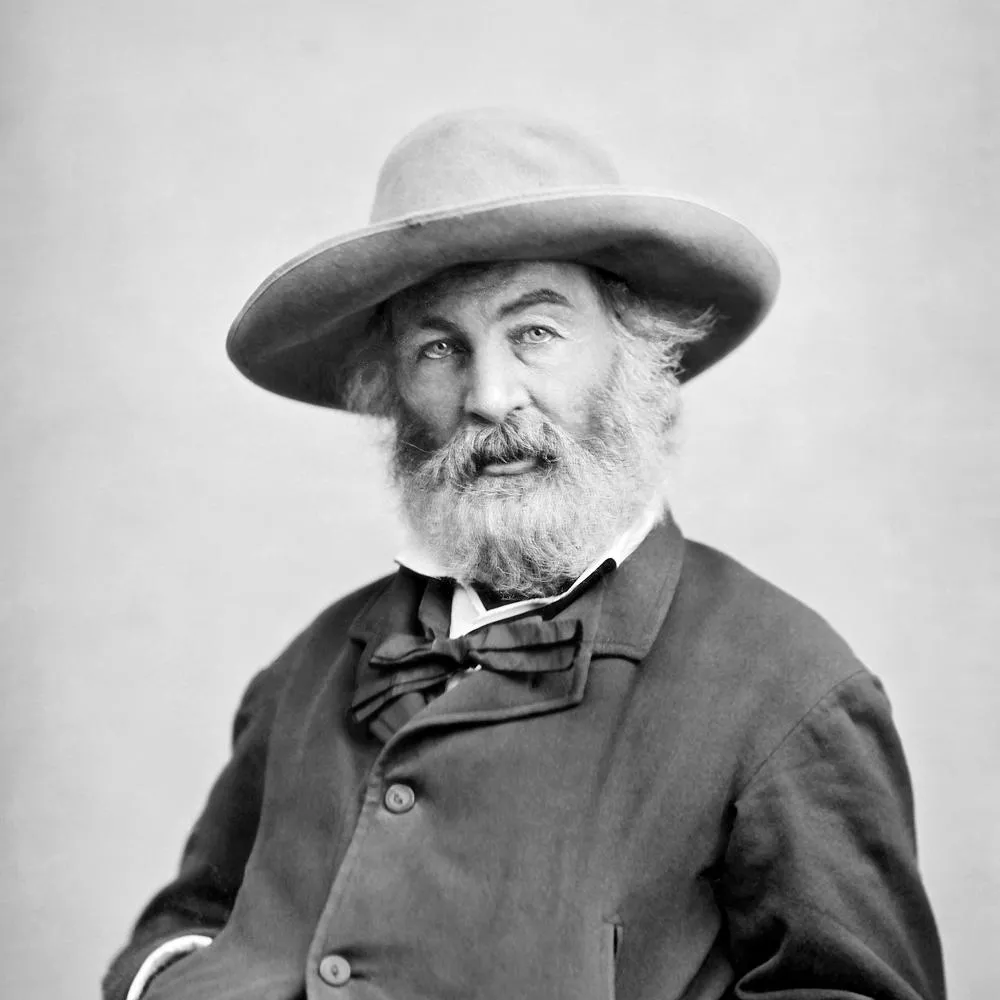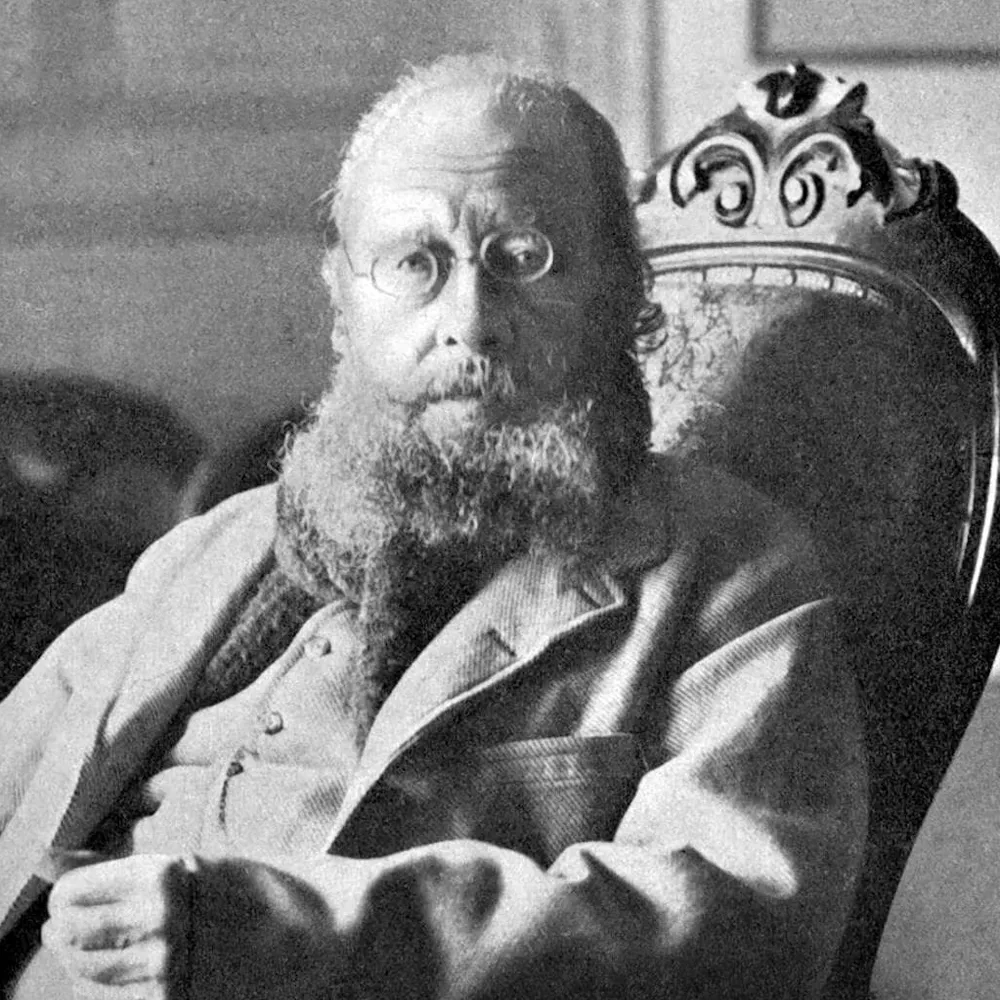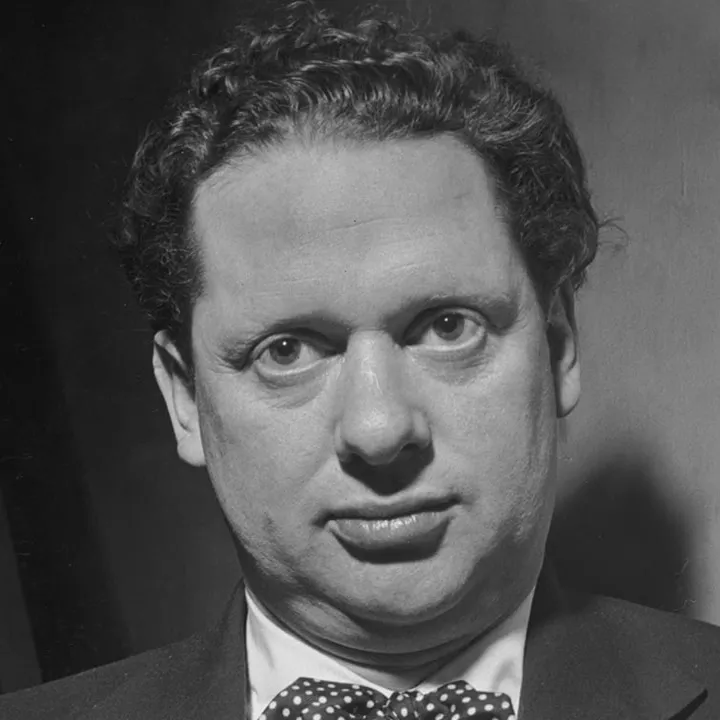Sponsor
-
33 Berichten
-
4 foto's
-
0 Video’s
-
Woont in -
-
Vanaf -
-
Male
-
17/11/2002
-
Gevolgd door 1 people
Actueel
-
What Is Anne Sexton’s Impact on Contemporary Women Poets?
Anne Sexton transformed modern poetry through her fearless honesty, her intense emotional clarity, and her inventive use of personal narrative. She helped define confessional poetry, and she reshaped how women writers approach identity, the body, and emotional truth.
#AnneSexton
www.nevermorepoem.com/anne-sextonWhat Is Anne Sexton’s Impact on Contemporary Women Poets? Anne Sexton transformed modern poetry through her fearless honesty, her intense emotional clarity, and her inventive use of personal narrative. She helped define confessional poetry, and she reshaped how women writers approach identity, the body, and emotional truth. #AnneSexton www.nevermorepoem.com/anne-sexton Anne SextonAnne Sexton (1928–1974) was an American poet renowned for her confessional style, exploring themes of mental illness, family, and womanhood. Her Pulitzer Prize-winning work, Live or Die, profoundly influenced modern poetry and feminist literature.0 Reacties 0 aandelen 111 Views 0 voorbeeldPlease log in to like, share and comment!
Anne SextonAnne Sexton (1928–1974) was an American poet renowned for her confessional style, exploring themes of mental illness, family, and womanhood. Her Pulitzer Prize-winning work, Live or Die, profoundly influenced modern poetry and feminist literature.0 Reacties 0 aandelen 111 Views 0 voorbeeldPlease log in to like, share and comment! -
What is Walt Whitman’s Perspective on Democracy?
Whitman viewed democracy as a moral and spiritual ideal grounded in the equal worth of every person. He celebrated diversity, individual freedom, and the collective energy of ordinary citizens. For him, democracy was not merely a political system but a living, poetic practice—sustained through empathy, mutual responsibility, and a shared national identity that honors all voices.
#WaltWhitman
www.nevermorepoem.com/walt-whitmanWhat is Walt Whitman’s Perspective on Democracy? Whitman viewed democracy as a moral and spiritual ideal grounded in the equal worth of every person. He celebrated diversity, individual freedom, and the collective energy of ordinary citizens. For him, democracy was not merely a political system but a living, poetic practice—sustained through empathy, mutual responsibility, and a shared national identity that honors all voices. #WaltWhitman www.nevermorepoem.com/walt-whitman Walt WhitmanWalt Whitman was an American poet, essayist, and journalist, known for his bold, innovative style and celebration of individuality, democracy, and nature. His work, especially Leaves of Grass, revolutionized American poetry.0 Reacties 0 aandelen 69 Views 0 voorbeeld
Walt WhitmanWalt Whitman was an American poet, essayist, and journalist, known for his bold, innovative style and celebration of individuality, democracy, and nature. His work, especially Leaves of Grass, revolutionized American poetry.0 Reacties 0 aandelen 69 Views 0 voorbeeld -
What is the Meaning Behind Edward Lear’s “The Jumblies”?
The meaning behind “The Jumblies” lies not in rational plot structure but in symbolic resonance. Through playful absurdity, Edward Lear constructs a poetic world where imagination transcends logic, where risk leads to transformation, and where courage defies conformity. The Jumblies’ improbable voyage becomes an allegory for creative boldness, emotional exploration, and the human longing for discovery.
#EdwardLear
www.nevermorepoem.com/edward-learWhat is the Meaning Behind Edward Lear’s “The Jumblies”? The meaning behind “The Jumblies” lies not in rational plot structure but in symbolic resonance. Through playful absurdity, Edward Lear constructs a poetic world where imagination transcends logic, where risk leads to transformation, and where courage defies conformity. The Jumblies’ improbable voyage becomes an allegory for creative boldness, emotional exploration, and the human longing for discovery. #EdwardLear www.nevermorepoem.com/edward-lear Edward LearEdward Lear (1812–1888) was an English poet, painter, and illustrator, best known for his nonsensical poems and limericks, particularly The Owl and the Pussycat. His whimsical verse and illustrations influenced children's literature and absurdist humor.0 Reacties 0 aandelen 104 Views 0 voorbeeld
Edward LearEdward Lear (1812–1888) was an English poet, painter, and illustrator, best known for his nonsensical poems and limericks, particularly The Owl and the Pussycat. His whimsical verse and illustrations influenced children's literature and absurdist humor.0 Reacties 0 aandelen 104 Views 0 voorbeeld -
What are the key philosophical ideas in Dylan Thomas’s poetry?
Dylan Thomas’s poetry reveals a rich constellation of philosophical ideas centered on mortality, renewal, memory, consciousness, and the sacredness of nature. His work encourages readers to embrace the full spectrum of existence—the beauty and the sorrow, the innocence and the decay, the individuality and the collective merging into nature’s rhythms.
#dylanthomas
www.nevermorepoem.com/dylan-thomasWhat are the key philosophical ideas in Dylan Thomas’s poetry? Dylan Thomas’s poetry reveals a rich constellation of philosophical ideas centered on mortality, renewal, memory, consciousness, and the sacredness of nature. His work encourages readers to embrace the full spectrum of existence—the beauty and the sorrow, the innocence and the decay, the individuality and the collective merging into nature’s rhythms. #dylanthomas www.nevermorepoem.com/dylan-thomas Dylan ThomasDylan Thomas (1914–1953) was a Welsh poet and writer, renowned for his powerful, lyrical verse. His works, including Do Not Go Gentle into That Good Night, explore themes of death, love, and the human condition.0 Reacties 0 aandelen 76 Views 0 voorbeeld
Dylan ThomasDylan Thomas (1914–1953) was a Welsh poet and writer, renowned for his powerful, lyrical verse. His works, including Do Not Go Gentle into That Good Night, explore themes of death, love, and the human condition.0 Reacties 0 aandelen 76 Views 0 voorbeeld -
What Is the Significance of Anne Sexton’s The Awful Rowing Toward God?
The Awful Rowing Toward God holds deep significance. It reveals Anne Sexton’s inner turmoil. It reveals her spiritual hunger. It reveals her struggle with despair. It reveals her hope for transcendence. Through simple clauses and vivid imagery, she creates a powerful narrative of faith and doubt. Through emotional honesty, she creates a direct confrontation with God. Through complex metaphors of rowing, she creates a long journey toward meaning.
#AnneSexton
www.nevermorepoem.com/anne-sextonWhat Is the Significance of Anne Sexton’s The Awful Rowing Toward God? The Awful Rowing Toward God holds deep significance. It reveals Anne Sexton’s inner turmoil. It reveals her spiritual hunger. It reveals her struggle with despair. It reveals her hope for transcendence. Through simple clauses and vivid imagery, she creates a powerful narrative of faith and doubt. Through emotional honesty, she creates a direct confrontation with God. Through complex metaphors of rowing, she creates a long journey toward meaning. #AnneSexton www.nevermorepoem.com/anne-sexton Anne SextonAnne Sexton (1928–1974) was an American poet renowned for her confessional style, exploring themes of mental illness, family, and womanhood. Her Pulitzer Prize-winning work, Live or Die, profoundly influenced modern poetry and feminist literature.0 Reacties 0 aandelen 124 Views 0 voorbeeld
Anne SextonAnne Sexton (1928–1974) was an American poet renowned for her confessional style, exploring themes of mental illness, family, and womanhood. Her Pulitzer Prize-winning work, Live or Die, profoundly influenced modern poetry and feminist literature.0 Reacties 0 aandelen 124 Views 0 voorbeeld -
What Is the Significance of "Do Not Go Gentle" By Dylan Thomas?
www.nevermorepoem.com/dylan-thomas
#DylanThomas
"Do Not Go Gentle into That Good Night" by Dylan Thomas is a powerful meditation on the human experience of death and the universal desire to resist its inevitable approach. Through his use of the villanelle form, his defiant tone, and his exploration of the individual’s relationship with death, Thomas creates a work that is both deeply personal and broadly resonant. The poem encourages the reader to value life and to fight for it, even in the face of unavoidable loss. By urging both his father and all of humanity to "rage, rage against the dying of the light," Thomas creates a timeless call to live with passion, purpose, and defiance.What Is the Significance of "Do Not Go Gentle" By Dylan Thomas? www.nevermorepoem.com/dylan-thomas #DylanThomas "Do Not Go Gentle into That Good Night" by Dylan Thomas is a powerful meditation on the human experience of death and the universal desire to resist its inevitable approach. Through his use of the villanelle form, his defiant tone, and his exploration of the individual’s relationship with death, Thomas creates a work that is both deeply personal and broadly resonant. The poem encourages the reader to value life and to fight for it, even in the face of unavoidable loss. By urging both his father and all of humanity to "rage, rage against the dying of the light," Thomas creates a timeless call to live with passion, purpose, and defiance. Dylan ThomasDylan Thomas (1914–1953) was a Welsh poet and writer, renowned for his powerful, lyrical verse. His works, including Do Not Go Gentle into That Good Night, explore themes of death, love, and the human condition.0 Reacties 0 aandelen 107 Views 0 voorbeeld
Dylan ThomasDylan Thomas (1914–1953) was a Welsh poet and writer, renowned for his powerful, lyrical verse. His works, including Do Not Go Gentle into That Good Night, explore themes of death, love, and the human condition.0 Reacties 0 aandelen 107 Views 0 voorbeeld -
The Power of Oral Tradition in the Poetry of Dylan Thomas
The power of oral tradition in the poetry of Dylan Thomas lies in his ability to make language sing. Through sound, rhythm, and voice, he transformed poetry into a living experience. His Welsh heritage, his love of words, and his gift for performance joined to create a unique fusion of ancient tradition and modern expression.
Thomas’s poems are not meant to be read in silence. They are meant to be heard, to be felt, to be shared. His voice carries the universal human need to speak and to listen, to remember and to imagine. The oral tradition gave him the means to turn poetry into a sacred act of communication.
#DylanThomas
www.nevermorepoem.com/dylan-thomasThe Power of Oral Tradition in the Poetry of Dylan Thomas The power of oral tradition in the poetry of Dylan Thomas lies in his ability to make language sing. Through sound, rhythm, and voice, he transformed poetry into a living experience. His Welsh heritage, his love of words, and his gift for performance joined to create a unique fusion of ancient tradition and modern expression. Thomas’s poems are not meant to be read in silence. They are meant to be heard, to be felt, to be shared. His voice carries the universal human need to speak and to listen, to remember and to imagine. The oral tradition gave him the means to turn poetry into a sacred act of communication. #DylanThomas www.nevermorepoem.com/dylan-thomas Dylan ThomasDylan Thomas (1914–1953) was a Welsh poet and writer, renowned for his powerful, lyrical verse. His works, including Do Not Go Gentle into That Good Night, explore themes of death, love, and the human condition.0 Reacties 0 aandelen 144 Views 0 voorbeeld
Dylan ThomasDylan Thomas (1914–1953) was a Welsh poet and writer, renowned for his powerful, lyrical verse. His works, including Do Not Go Gentle into That Good Night, explore themes of death, love, and the human condition.0 Reacties 0 aandelen 144 Views 0 voorbeeld -
How Does Walt Whitman Convey Optimism in His Poetry?
The optimism of Walt Whitman flows through every aspect of his poetry—from his democratic ideals to his love of nature, his celebration of the body, and his faith in the human soul. He finds hope in connection, in awareness, and in the unity of all things. His language overflows with joy, rhythm, and life.
#waltwhitman
www.nevermorepoem.com/walt-whitmanHow Does Walt Whitman Convey Optimism in His Poetry? The optimism of Walt Whitman flows through every aspect of his poetry—from his democratic ideals to his love of nature, his celebration of the body, and his faith in the human soul. He finds hope in connection, in awareness, and in the unity of all things. His language overflows with joy, rhythm, and life. #waltwhitman www.nevermorepoem.com/walt-whitman Walt WhitmanWalt Whitman was an American poet, essayist, and journalist, known for his bold, innovative style and celebration of individuality, democracy, and nature. His work, especially Leaves of Grass, revolutionized American poetry.0 Reacties 0 aandelen 301 Views 0 voorbeeld
Walt WhitmanWalt Whitman was an American poet, essayist, and journalist, known for his bold, innovative style and celebration of individuality, democracy, and nature. His work, especially Leaves of Grass, revolutionized American poetry.0 Reacties 0 aandelen 301 Views 0 voorbeeld -
The Symbolic Function of Repetition in Villanelle Poetry Works
The symbolic function of repetition in villanelle poetry is central to the form’s power and enduring appeal. Through repeated lines, poets explore obsession, emotional intensity, inevitability, memory, and reflection. Repetition transforms the form from a technical exercise into a profound medium for human expression.
#Villanelle
www.nevermorepoem.com/villanelleThe Symbolic Function of Repetition in Villanelle Poetry Works The symbolic function of repetition in villanelle poetry is central to the form’s power and enduring appeal. Through repeated lines, poets explore obsession, emotional intensity, inevitability, memory, and reflection. Repetition transforms the form from a technical exercise into a profound medium for human expression. #Villanelle www.nevermorepoem.com/villanelleVillanelle Poem Definition, Format, Structure & Examples - Nevermorepoem.comA villanelle is a 19-line poem with five tercets and a quatrain, featuring two rhymes and repeated refrains. It conveys emotional intensity through structured repetition, often exploring themes of love, loss, or longing.0 Reacties 0 aandelen 100 Views 0 voorbeeld -
Why Did Edward Lear Struggle with Recognition During His Lifetime?
Edward Lear’s struggle for recognition during his lifetime can be traced to multiple factors: the Victorian emphasis on moral and didactic literature, the unconventional nature of his poetry, social perceptions of nonsense, and his personal challenges. His work, full of playfulness, invention, and musicality, did not fit the literary expectations of his era.
#EdwardLear
www.nevermorepoem.com/edward-learWhy Did Edward Lear Struggle with Recognition During His Lifetime? Edward Lear’s struggle for recognition during his lifetime can be traced to multiple factors: the Victorian emphasis on moral and didactic literature, the unconventional nature of his poetry, social perceptions of nonsense, and his personal challenges. His work, full of playfulness, invention, and musicality, did not fit the literary expectations of his era. #EdwardLear www.nevermorepoem.com/edward-lear Edward LearEdward Lear (1812–1888) was an English poet, painter, and illustrator, best known for his nonsensical poems and limericks, particularly The Owl and the Pussycat. His whimsical verse and illustrations influenced children's literature and absurdist humor.0 Reacties 0 aandelen 187 Views 0 voorbeeld
Edward LearEdward Lear (1812–1888) was an English poet, painter, and illustrator, best known for his nonsensical poems and limericks, particularly The Owl and the Pussycat. His whimsical verse and illustrations influenced children's literature and absurdist humor.0 Reacties 0 aandelen 187 Views 0 voorbeeld -
Dylan Thomas and His Contribution to Radio and Broadcasting
www.nevermorepoem.com/dylan-thomas
The legacy of Dylan Thomas in radio and broadcasting is as profound as his influence in poetry. Through his broadcasts, he proved that sound itself could become poetry. His voice turned words into music, his scripts transformed silence into drama, and his imagination made the invisible visible.
#dylanthomasDylan Thomas and His Contribution to Radio and Broadcasting www.nevermorepoem.com/dylan-thomas The legacy of Dylan Thomas in radio and broadcasting is as profound as his influence in poetry. Through his broadcasts, he proved that sound itself could become poetry. His voice turned words into music, his scripts transformed silence into drama, and his imagination made the invisible visible. #dylanthomas Dylan ThomasDylan Thomas (1914–1953) was a Welsh poet and writer, renowned for his powerful, lyrical verse. His works, including Do Not Go Gentle into That Good Night, explore themes of death, love, and the human condition.0 Reacties 0 aandelen 174 Views 0 voorbeeld
Dylan ThomasDylan Thomas (1914–1953) was a Welsh poet and writer, renowned for his powerful, lyrical verse. His works, including Do Not Go Gentle into That Good Night, explore themes of death, love, and the human condition.0 Reacties 0 aandelen 174 Views 0 voorbeeld -
How Does Walt Whitman Use Symbolism in His Writings?
www.nevermorepoem.com/walt-whitman
For Whitman, symbolism was not decoration but revelation. It was the means through which he expressed his deepest beliefs: that all things are interconnected, that divinity resides in the ordinary, and that life is an unending cycle of renewal. His poetry invites readers to see the sacred in the everyday and to recognize their place within the great fabric of existence.
#WaltWhitmanHow Does Walt Whitman Use Symbolism in His Writings? www.nevermorepoem.com/walt-whitman For Whitman, symbolism was not decoration but revelation. It was the means through which he expressed his deepest beliefs: that all things are interconnected, that divinity resides in the ordinary, and that life is an unending cycle of renewal. His poetry invites readers to see the sacred in the everyday and to recognize their place within the great fabric of existence. #WaltWhitman Walt WhitmanWalt Whitman was an American poet, essayist, and journalist, known for his bold, innovative style and celebration of individuality, democracy, and nature. His work, especially Leaves of Grass, revolutionized American poetry.0 Reacties 0 aandelen 166 Views 0 voorbeeld
Walt WhitmanWalt Whitman was an American poet, essayist, and journalist, known for his bold, innovative style and celebration of individuality, democracy, and nature. His work, especially Leaves of Grass, revolutionized American poetry.0 Reacties 0 aandelen 166 Views 0 voorbeeld
Meer blogs




